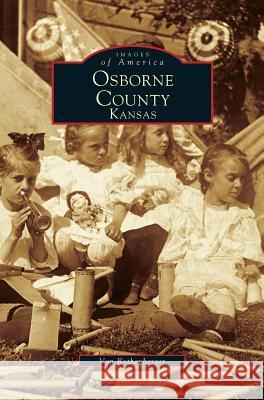Osborne County, Kansas » książka
Osborne County, Kansas
ISBN-13: 9781531601034 / Angielski / Twarda / 1999 / 130 str.
With the American frontier moving quickly westward, Osborne County, nestled in the Blue Hills of north-central Kansas, began its official life in 1867. Though the county was not organized until four years later, settlers of various backgrounds sought homesteads there and quickly filled the untamed land. By 1881, the county boasted an agrarian population of 12,000. From the hunting grounds of early Native American inhabitants to the agricultural roots set down by settlers after Kansas achieved statehood in 1861, from the coming of the railroad to the laying of state and federal highways, the story of Osborne County is both vital and enduring. Covering 900 square miles and the county's formative years (1876-1941), Osborne County, Kansas beautifully captures the spirit of a region and its people, documenting old street scenes, businesses, homes, and residents as they looked, played, prayed, learned, and worked, both in the city and on the farm during those crucial years.
With the American frontier moving quickly westward, Osborne County, nestled in the Blue Hills of north-central Kansas, began its official life in 1867. Though the county was not organized until four years later, settlers of various backgrounds sought homesteads there and quickly filled the untamed land. By 1881, the county boasted an agrarian population of 12,000. From the hunting grounds of early Native American inhabitants to the agricultural roots set down by settlers after Kansas achieved statehood in 1861, from the coming of the railroad to the laying of state and federal highways, the story of Osborne County is both vital and enduring. Covering 900 square miles and the countys formative years (1876-1941), Osborne County, Kansas beautifully captures the spirit of a region and its people, documenting old street scenes, businesses, homes, and residents as they looked, played, prayed, learned, and worked, both in the city and on the farm during those crucial years.











